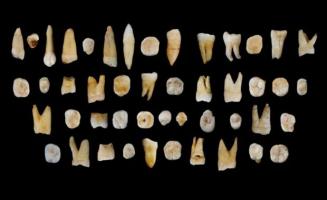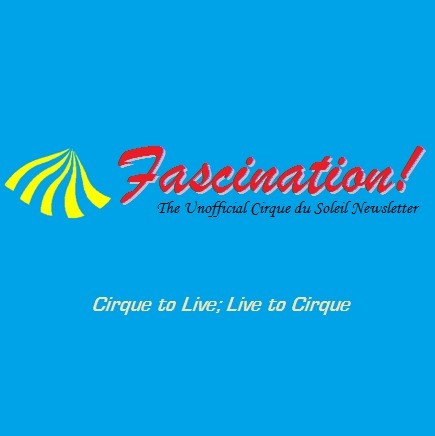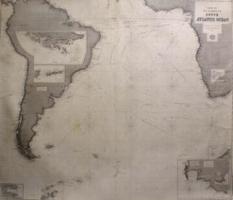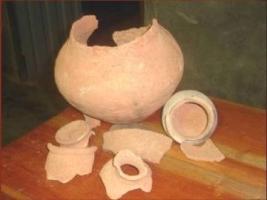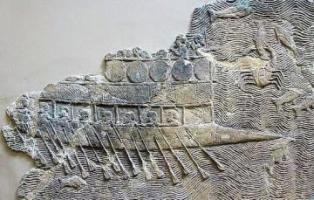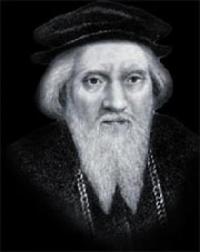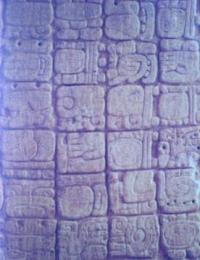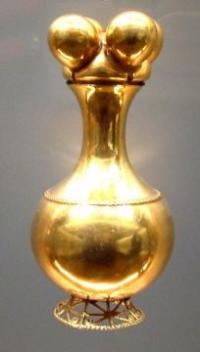Copy Link
Add to Bookmark
Report
AIList Digest Volume 2 Issue 100

AIList Digest Friday, 3 Aug 1984 Volume 2 : Issue 100
Today's Topics:
LISP - Common Lisp Implementations,
Simulation - Information Mechanics,
Demos - U. Texas Demos at AAAI,
Newsletters - Canadian Artificial Intelligence Newsletter,
Robotics - Challenge,
Reviews & Humor - Expert Systems, Fuzzy Logic, and Fuzzy Batteries,
Expert Systems - $12,000 Software?
----------------------------------------------------------------------
Date: Fri, 3 Aug 84 01:00:23 pdt
From: weeks%ucbpopuli.CC@Berkeley (Harry Weeks)
Subject: Common Lisp
Is there a commercially available implementation (by which I mean either
sold by a for-profit company or available from educational and research
institutions for use by for-profit companies) of Common Lisp for either
4.2 bsd Unix on a VAX, or for Version 7 Unix on a 68000? If anyone out
there has any leads, I would most appreciate hearing of them.
Harry Weeks
(g.weeks@Berkeley)
------------------------------
Date: 3 Aug 1984 13:56:42-EDT
From: sde@Mitre-Bedford
Subject: Total simulation and Information Mechanics
Someone asked if I could abstract (what I recall as) the I.M. argument that
total simulation requires at least the mass of the thing to be simulated.
Rather than chance noise in the channel, I think it would be better to inquire
of Dr. Frederick W. Kantor, who may be telexed at 4998124, answer-back
KANTOR FW, or MCI mail #2050656.
Dr. Kantor is the man who laid the foundation for the field of Information
Mechanics, which name is taken from his book. John Wiley & Sons, Inc.,
publishers, asked for permission to publish his research notes, which are
available as a book (copies from 2nd printing) which is the defining monograph
world-wide for the field. Dr. Kantor set down the name for the field
"Information Mechanics" as the last two words of the monograph.
If the above seems other than what was requested, my apologies, but I think
that Fred is the best person to deal with the matter.
David sde@mitre-bedford
------------------------------
Date: Mon 30 Jul 84 14:44:35-CDT
From: Gordon Novak Jr. <CS.NOVAK@UTEXAS-20.ARPA>
Subject: U. Texas Demos at AAAI
The University of Texas at Austin will hold an open house and series of
demonstrations during AAAI-84. The demonstrations will be from 7-9 PM
on Tuesday, August 7. The demonstrations are not listed in the conference
schedule, but a brochure describing them and showing where they are located
will be provided in the registration packet. Bus service will be provided.
The demonstrations will include:
J. K. Aggarwal Laboratory for Image and Signal Analysis
R. S. Boyer, J S. Moore The Boyer-Moore Theorem Prover
Shang-Ching Chou Geometry Provers Based on Wu's Algorithm
Larry Hines Inequality Theorem Prover
W. Lehmann, O. Gajek, METAL German-to-English Machine Translation
J. Slocum, J. White, B. Root
Robert Levinson A Self-Organizing Retrieval System for Graphs
Gordon Novak GLISP Language and GEV Data Inspector
Gordon Novak ISAAC Physics Problem Solver
Elaine Rich, William Murray Automatic Debugging System for LISP
Robert F. Simmons, Chin Chee Device Simulation
Robert F. Simmons An English to Horn Clause Translation System
------------------------------
Date: 2 Aug 84 12:54:24-EDT (Thu)
From: Graeme Hirst <gh%toronto.csnet@csnet-relay.arpa>
Subject: Canadian Artificial Intelligence Newsletter
. CANADIAN A R T I F I C I A L I N T E L L I G E N C E NEWSLETTER .
Publication begins in September 1984
====================================
A subscription to the /Canadian Artificial Intelligence Newsletter/ is included
in membership in CSCSI/SCEIO, the Canadian artificial intelligence society.
All members will soon be receiving the first issue.
The /Newsletter/ will include news reports from industry and universities,
opinions, reviews, abstracts of recent research, and announcements of general
interest in A.I. To join the society and receive the /Canadian A.I.
Newsletter/ quarterly, just send a note to CIPS (which administers membership
for the society), with the appropriate fee (see below). Join now, to be sure
of receiving the first issue. ** Non-Canadian members are welcomed. **
CIPS
243 College Street, 5th floor
Toronto, CANADA M5T 2Y1
Membership: $10 regular, $5 students (Canadian funds); there is a discount of
$2 for CIPS members. Payment may be made in U.S. dollars at the current rate
of exchange (C$1.00 = US$0.76).
Articles and other material for the newsletter may be submitted to the editor:
Graeme Hirst, Department of Computer Science, University of Toronto, Toronto
Canada M5S 1A4. Phone: 416-978-8747. UUCP: ...!utcsrgv!cscsi
CSNET: cscsi@toronto ARPANET: cscsi.toronto@csnet-relay
------------------------------
Date: Fri 3 Aug 84 10:29:50-PDT
From: Ken Laws <Laws@SRI-AI.ARPA>
Reply-to: AIList-Request@SRI-AI
Subject: Robotics
The following challenge appears in the Forum column of the August issue
of IEEE Spectrum:
The Canine Computer
Having seen the June issue, I would like to raise a question about the
ability of roboticists to fuse technology with canine capabilities,
let alone human ones. I hereby challenge the world's robot experts to
duplicate electronically the performance of my little dog, who is able
to catch morsels of raisin buns that I toss to him occasionally as he
sits patiently and expectantly beside the table.
His performance is spectacular. He is able to calculate the parabolic
trajectory of the morsel, regardless of its height or direction, and
catch it in his mouth, often in the split second before it has reached
its apogee. He can do this at all levels---from a crouch to catch low-
flying morsels, to a jump to catch high ones. His accuracy is
astounding, showing that his internal computer can calculate a parabolic
course and give complete and elaborate instructions to his nervous
system, including the opening and closing of his mouth at the right
microsecond. About 5 percent of the time the morsel hits the tip of
his nose and bounces off in a random direction. This event is followed
by a lightening retrieval from the floor where it lands. (On one
occasion he was able to catch a morsel on a second try after it had
bounced off his nose.)
My dog weighs 37 pounds. Can anyone build a robot that can equal this
dog's operation while on a smooth linoleum tile floor and in an
illumination of about 15 footcandles? Can it be done without the
37-pound restriction?
I offer no prize for this accomplishment. Perhaps some wealthy
philanthropic roboticist would like to step forward. Until electronic
technology can equal the computer in the brain of a little dog its
very honor is at stake.
William B. Elmer
Thornton, N.H.
The IEEE Spectrum editors then mention that John Billingsly is
organizing a contest for Ping-Pong playing robots, to be held at the
Computer Fair in London in 1985. Dr. Billingsly's address is:
Dept. of Electrical and Electronic Engineering, Portsmouth Polytechnic,
Anglesea Road, Portsmouth, England. The International Personal
Robot Congress and Exposition will hold the U.S. trials for a 1986
Ping-Pong contest during the March 1985 meeting: contact IPRC, 777
Locust St., Denver, Colorado 80220.
This same issue contains a favorable book review of Ayres and Miller's
Robotics: Applications and Social Implications.
-- Ken Laws
------------------------------
Date: Fri 3 Aug 84 11:06:23-PDT
From: Ken Laws <Laws@SRI-AI.ARPA>
Reply-to: AIList-Request@SRI-AI
Subject: Expert Systems, Fuzzy Logic, and Fuzzy Batteries
I have recently run across the July 9 issue of Business Week, which
featured Artificial Intelligence as its cover story (pp. 54-62).
Much of the article discussed expert systems and the 40 or so companies
now trying to market them.
The August 1984 issue of IEEE Spectrum contains an excellent article by
Lotfi Zadeh about fuzzy logic and its applications to process control,
robot navigation, database access, expert systems, and other topics.
He mentions that fuzzy mathematics now includes the theory of fuzzy
topological spaces, fuzzy measures, fuzzy groups, fuzzy random variables,
fuzzy arithmetic, fuzzy analysis, fuzzy stability theory, fuzzy systems,
and fuzzy graphs. Dr. Zadeh presents a good case for fuzzy linguistics
and fuzzy reasoning (as in MYCIN and PROSPECTOR) as essential elements
of expert systems and learning systems.
For more fuzzy talk, the issue reprints an 1884 Life magazine article about
the cat battery. An excerpt:
Cats, according to Tyndall, are either electro-positive or
electro-negative. When in the neutral state (see Plate I) both
fluids are combined, and the most sensitive galvanometer can detect no
current. Thus insulated, neither A nor B exhibits either attraction
or repulsion for surrounding objects, excepting for a hot stove or a
piece of fish. But this affinity, according to the recent
investigations of Siemens and Halske, is the result of chemical and
not electrical attraction.
Now, however, let us submit electro-positive cat A and
electro-negative cat B to exciting influences (see Plate II).
Instantly we observe the development of electrical energy -- A being
strongly positive that he is the better cat, while B is as violently
negative. This, as has been proved by the experiments of Prescott,
Edison, and others, is due to induction; each cat trying to induce the
other to believe that he isn't afraid.
This electrical state of activity is accompanied by all the well-known
electro-static phenomena. The hairs of each cat stand on end, and
surrounding objects -- such as bootjacks, soap, cough-medicine
bottles, and crockery -- may be attracted with great velocity from
distances of 100 to 250 feet.
Cats are absolute non-conductors. This fact was discovered in 1876 by
Gerritt Smith, while vainly endeavoring to conduct a cat out of the
coal cellar. It might be urged, therefore, that they had high
internal resistance. This is not true. The external resistance
(again glance at Plate II) is very high, but the internal resistance
is never over one Ohm ("'ome" or "home," to give German, English, and
American terms), while in many cases it is less, as is witnessed by
the fact that there are 1,317,009 ohmless cats in this city alone.
But while the internal resistance is surprisingly low, the intensity
is so high that by inductive influence alone two cat elements can
maintain a whole neighborhood in a state of electrical excitement for
hours. [...]
Speaking of fun with words, this issue of Spectrum also quotes a poll showing
that "chemists, if not actually better than all other human beings, are,
to say the least, a credit to their race and a damned fine group of
upstanding and patriotic Americans, all of whom embody the finest attributes
that can be attributed to those to whom those attributes can be attributed."
[From Ralph Steinhardt Jr. and David Weinman, "The Courteous Retort,"
Chemtech, Vol. 14, No. 6, June 1984.]
-- Ken Laws
------------------------------
Date: 2 Aug 1984 10:17-PDT
From: the tty of Geoffrey S. Goodfellow <Geoff @ SRI-CSL>
Subject: $12,000 Software?
San Francisco Sunday Examiner & Chronicle, July 29, 1984
John Dvorak
PERISCOPE
$12,000 software?
Would you pay $600 apiece for gold-plated lug nuts to be used on the
beat-up rims of a '52 Ford pickup truck? What would you think of the
marketing man who suggested such a products? I'd think he was crazy.
There's a company down in Palo Alto that has a software package it
would like someone to buy. (A little background music, please) The
company is called Teknowledge Inc. and was started by Stanford
professors.
The company makes software for the IBM PC. You can buy an IBM PC for
around $2,000. The software this company sells costs $12,000. It
accomplishes one thing: It allows you to test an idea to see whether
an expert system can be built around the idea. An expert system is a
computer system that solves complex problems using so-called
artificial intelligence.
An example of an expert system is a program called Mycin. It was
developed in the 1970s to diagnose meningitis and other infections. A
user tells the computer certain requested facts and the computer then
leads the user to something close to a diagnosis.
Now most people would have made a package like this and had it run on
an IBM mainframe computer or at least a VAX minicomputer. But to put
a $12,000 piece of software on a personal computer is cavalier, to say
the least. It's as if to say, "Yeah, we've got this package and we
know what it's worth, and we're going to let the well-heeled
government-financed research companies use it. Look, we can even make
it run on a personal computer--look, but don't touch.
This is the old pre-micro attitude toward software. It was proven to
be myopic when companies like MicroPro, Ashton-Tate and MicroSoft
started doing business in excess of $50 million a year by selling for
$500 software that would have cost $12,000 if marketed by Teknowledge.
MicroPro decided that everyone needed the power of a dedicated word
processor, Ashton-Tate felt that more than just a few dozen researchers
would like the power of a relational database, and MicroSoft felt that
a computer language would be popular if available for $350 instead of
$35,000.
OK, so forget about the price. What can the Teknowledge package do?
The system is called M.1 (pronounced M dot 1 by my friends).
According to its own press release, you spend the $12,000 "for rapid
prototyping of potential full-scale operational systems. In addition
to establishing technical feasibility, these example systems serve as
useful demonstrations." That means this investment just gets you
started--started spending, that is.
Luckily, the system can also create a stand-alone expert system with
up to 200 knowledge base entries. I'm not impressed. The company
goes on to exemplify this stand-alone value with a "Wine Adviser"
expert system with 100 knowledge base entries. Here's the actual
output from this "expert" system. This is called by the company "the
deliberation process of a typical California wine expert." The computer
asks the question and the user responds.
Do you generally prefer red or white wines? Red.
Do you generally prefer light, medium or full-bodies wines? Full.
Is the main component of the meal meat, fish or poultry? Poultry
Does the meal have turkey in it? No.
Is the sauces for the meal spicy, sweet, cream or tomato? Tomato.
Is the flavor of the meal delicate, average or strong? Average.
The following wines will mostly be dry, medium-bodies, and red. They
are recommended for your meal: Zinfandel (86%); Cabernet Sauvignon
(86%); Burgundy (34%); Valpolicella (34%).
At this point every wine connoisseur is turning over in his grave. So
the user goes out and buys a Zinfandel from Amador County laced with
residual sugar and 15 percent alcohol, drinks it with his chicken,
gags and decides that this "expert" system is useless.
The fact is that even the most mundane expert systems such as this are
infinitely complex and impossible to develop with the limitations
imposed by this $12,000 diskette.
[To be fair, I doubt that Technowledge intended this expert system
to be taken seriously as a "wine advisor" if they have given it no
knowledge of individual wines. It is more likely a demonstration
of the type of program and level of sophistication that could be
handled with their system. If someone with inside knowledge wishes
to defend the system, I will provide a reasonable amount of AIList
"space" for the reply.
Another point: It appears to me (from typos and other signs) that
this message was typed in and not lifted from a newswire. I am willing
to distribute such messages (on the sender's responsibility), but I have
to be a little more conservative about passing along newswire copy.
Certain universities get the newswires gratis as a stimulus to research
in automated information retrieval. This service will be discontinued
if it appears that our net is publishing the material in competition with
other news providers. Warning suspensions have already occurred. I
therefore ask readers to be selective about sending in text from
newspaper items, preferably sending only summaries or extracts (with
proper credit given).
On the other hand, I greatly appreciate it when readers send in
informative pieces like this one. Thanks, Geoff! -- KIL]
------------------------------
End of AIList Digest
********************








